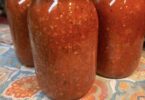How to Cook the Diaphragm: Quick Cooking Techniques
Before cooking, the diaphragm should have its tough outer fat layer removed—this is typically done by the butcher. Given its mineral flavor and tendency to become stringy, it benefits from a quick marinade in extra virgin olive oil and aromatic herbs for about 30 minutes.
Cook it on a grill or in a pan for just a few minutes per side, aiming for rare to medium-rare doneness. Remember to slice against the grain for easier chewing.
The diaphragm is also suitable for mincing, making it an excellent choice for ragù (like Bolognese sauce) or hamburgers. It can be sliced into strips, making it digestible and iron-rich, especially appealing for children.
In regions like Veneto and Puglia, horse diaphragm is a common delicacy. In Veneto, it’s known as straeca, a thin steak from the diaphragm, tenderized by beating. In Puglia, braciole al sugo is popular, where the diaphragm is sliced, pounded, stuffed with cheese, and cooked in tomato sauce.
Conclusion
The diaphragm may be an overlooked cut, but its unique flavor and versatility make it an excellent choice for various dishes. Whether grilled, sautéed, or slow-cooked, it offers a delicious and economical option for home cooks willing to experiment.
ADVERTISEMENT






